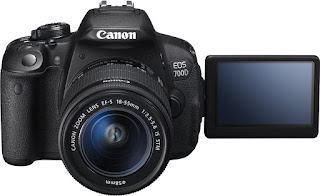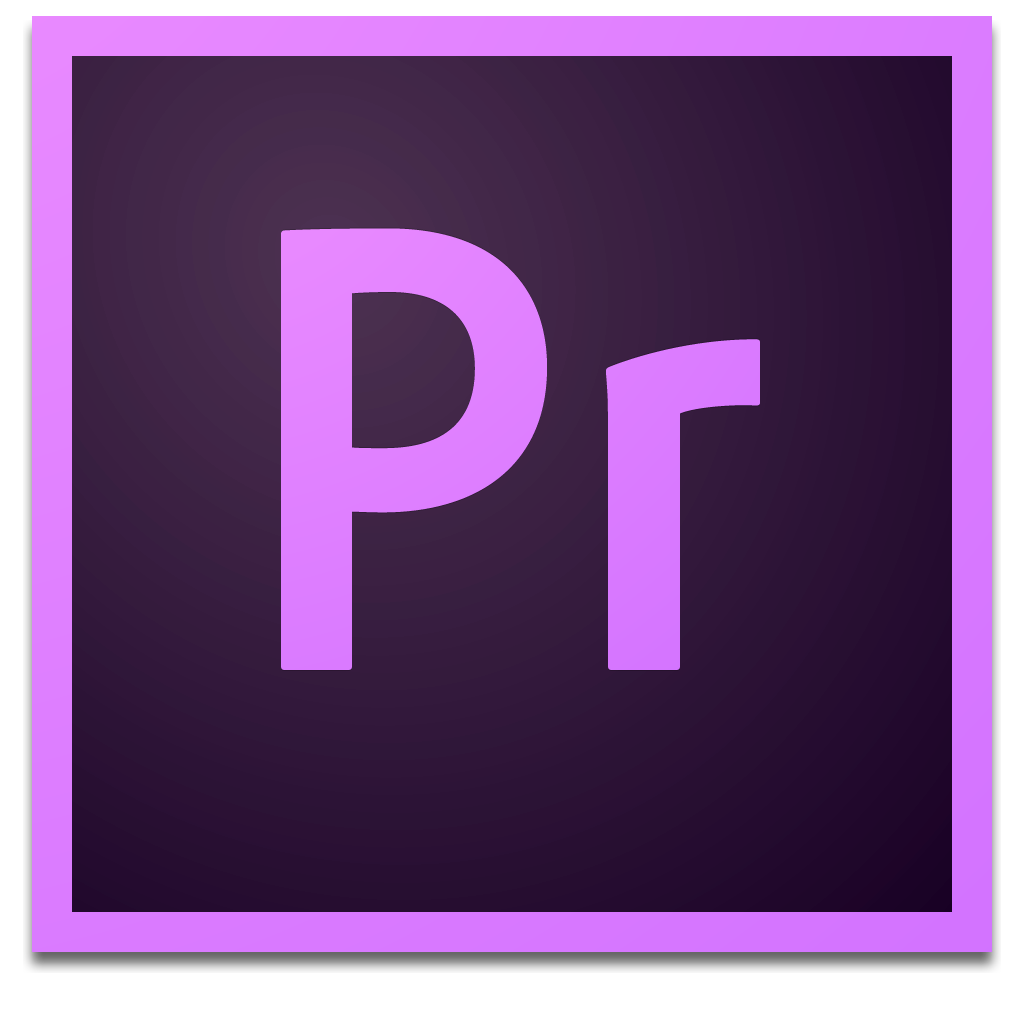- 05:15
- 0 Comments
- 03:40
- 0 Comments
Camera
 Canon EOS 700D / T5i DSLR Camera
Canon EOS 700D / T5i DSLR Camera Resolution: 18 megapixel
Sensor type: CMOS
Zoom: 18-55mm
Retail value: £365
- When exploring what we could do with the camera, we found that we could use the touch screen to choose an area of focus. This was useful for when we wanted more focus on particular areas in the shot, such as on a certain character in the foreground.
- During filming, we found that sometimes focus didn't adjust when things entered the shot. So, for certain shots we found that it was best to have most of the things in the shot before the recording starts.
- Holding a button half-way allows for auto-focus, which is useful to keep focus throughout the shot.

Tripod
- When adjusting the legs and the position of the camera, we learned what latches did what, as well as the use of pivots to move the camera.
- We’ve learnt how to manoeuvre the camera and tripod in such a way that it fit our needs.
 When using the tripod, we explored different heights, by adjusting the legs accordingly. This made it easier to get the angles we wanted.
When using the tripod, we explored different heights, by adjusting the legs accordingly. This made it easier to get the angles we wanted.
- We learned how to tell when the camera and the tripod was even by using the spirit level.
- We learned how to tell when the camera and the tripod was even by using the spirit level.
Software

Adobe Premier Pro
- We learnt how to use filters in the post production segment of our creation process, such as the lighting effect below, which puts a spotlight on a specific place in the shot. I used this to put emphasis on certain areas of the frame which I wanted to draw attention to.
- We learned that black bars were very useful for hiding things off screen and giving it a cinematic look.
- We learned about a filter which allows you to choose a specific colour to display, for example, in our final task we chose red. This way, the red in the frame stands out more than other colours, putting emphasis on Alistair's tie - an important prop.
- We discovered how to use colour correction to make our clips look a lot better and more professional. For example, I used it to make the scenes look a lot more mute/less bright.
- We found out how to use video and audio transitions effectively. For example, there are a few options with audio transitions that would allow me to make the sound seem continuous, thus not having a sudden cutting sound to the next scene.
- We learned to use the snipping/cutting tool effectively, to cut scenes down to the parts we wanted.
- We found out about different audio correction tools, for example, the declicker which helps get rid of clicking sounds in the background of the clip.
- We learned how to effectively add sounds and music manually to build tension, from a royalty-free source.

Adobe Premier Pro
- We learnt how to use filters in the post production segment of our creation process, such as the lighting effect below, which puts a spotlight on a specific place in the shot. I used this to put emphasis on certain areas of the frame which I wanted to draw attention to.
- We learned that black bars were very useful for hiding things off screen and giving it a cinematic look.
- We learned about a filter which allows you to choose a specific colour to display, for example, in our final task we chose red. This way, the red in the frame stands out more than other colours, putting emphasis on Alistair's tie - an important prop.
- We discovered how to use colour correction to make our clips look a lot better and more professional. For example, I used it to make the scenes look a lot more mute/less bright.
- We found out how to use video and audio transitions effectively. For example, there are a few options with audio transitions that would allow me to make the sound seem continuous, thus not having a sudden cutting sound to the next scene.
- We learned to use the snipping/cutting tool effectively, to cut scenes down to the parts we wanted.
- We found out about different audio correction tools, for example, the declicker which helps get rid of clicking sounds in the background of the clip.
- We learned how to effectively add sounds and music manually to build tension, from a royalty-free source.
Our team worked on this evaluation together.
- 03:40
- 0 Comments
Criteria.
AUDIENCE ENGAGEMENT
This describes how an audience interacts with a media text. Different people react in different ways to the same text.
AUDIENCE EXPECTATIONS
These are the advance ideas an audience may have about a text. This particularly applies to genre pieces. Don't forget that producers often play with or deliberately shatter audience expectations.
AUDIENCE FOREKNOWLEDGE
This is the definite information (rather than the vague expectations) which an audience brings to a media product.
AUDIENCE IDENTIFICATION
This is the way in which audiences feel themselves connected to a particular media text, in that they feel it directly expresses their attitude or lifestyle.
AUDIENCE PLACEMENT
This is the range of strategies media producers use to directly target a particular audience and make them feel that the media text is specially 'for them'.
- 03:39
- 0 Comments
Researching our audience
As part of our research, we talked about who our audience should be.
First, we looked at the criteria for our audience, such as age, gender and socio-economic status. In a separate post, we looked at these main groups and what kind of individuals we have aimed our film towards.
"We decided, because of it's ideologically sensitive content, that anyone under 12 shouldn't see it. Because any gore will only be brief, we think we'll be able to a pitch it to a 12 and older audience. However, we aim for a 15+ audience because they are more likely to understand the themes of the opening and the film. We're aiming to appeal to a more mass audience of all genders and ages. We also think that, because of the themes, that the film should also appeal to a more general selection of class groups (as it contains both gore and psychological/'thinking' themes). These groups will be E (or specifically the students part, as it will also be made by students), D, C2 and possibly C1."
We also aimed at a UK audience, due to the fact that we are a low-budget independent production company, and distributing elsewhere may be difficult due to costs and the fact that our production company would be unknown.
Using our now established audience idea, we published a questionnaire and it's responses to find the media interests of our potential audience. The responses are as follows:
Using this research, we adjusted our project to appeal more to our target audience, for example, including more mystery and suspense. However, it showed that our plans were appropriate for our target audience in circumstances such as the private identity of the antagonist, and the music used in our opening.
After filming
Once we had finished our product, our audience remained relatively the same. Due to the fact that it contains police/detective work as Alistair's profession, it may start to appeal more to people of higher socio-economic status, such as those in A and B, as it reflects their professions. In which case, we'll have a very general socio-economic appeal, but keep the majority of our focus on students.
Audience responses to our media product

Audience Focus.
All of our responses came from the UK, which was the location of our intended audience.
When asking what for their opinions, we received a lot of different positive feedback, such as:
We also received some constructive criticism, which was around the consensus of:
When asking what for their opinions, we received a lot of different positive feedback, such as:
"You have used a range of different shots, angles and movements as well as use of location within this introduction."
"I like the mystery of the protagonist being the antagonist as well."
"Tension inducing"
"...there was a good range of camera shots"
We also received some constructive criticism, which was around the consensus of:
"You've given the antagonist away too quickly..."
"Make the protagonist being the antagonist less obvious."
Our feedback questionnaire shows that our media product appealed mostly to the audience we were aiming for, with some anomalies now and again (such as younger audiences and higher socio-economic classes), but overall we achieved the bulk of the audience we identified to be appropriate.
Our team worked on this evaluation together.
- 03:38
- 0 Comments
Our team worked on this evaluation together.
- 03:37
- 0 Comments
- 03:37
- 0 Comments


 Titles interrupt and take over the view. This is a common technique used in psychological horrors to give a tense, almost schizo effect to put the watcher on edge.
Titles interrupt and take over the view. This is a common technique used in psychological horrors to give a tense, almost schizo effect to put the watcher on edge.
This effect can also be achieved through flash imagery. our movie Murk and Se7en have both utilized both methods.



Generally, females in horror movies are vulnerable and unable to fight back. When a female character is only there for a scene or 2, their personalities are usually a predictable stereotype of women.
In out opening, we abided by these conventions by making our character seem feminine to a degree (Make up, gossiping on the phone, etc) but also strayed by giving her short brown hair rather than blonde and gave her glasses to make her more of a random victim than the predictable eye-candy character.
- 03:36
- 0 Comments
- 08:22
- 0 Comments
Draft 09
Our project is almost complete! As of our ninth draft we have all scenes and shots in order, edited and generally tweaked. It is still not finished but all we need is a few finer alterations.
- 07:37
- 0 Comments
Draft 07
We have finally completed all of our filming, and have inserted it into our seventh draft.
Draft 08
- 07:33
- 0 Comments
Draft 04
In draft 4 we added a filter to the new footage to match the filters of the last scene.
Draft 5
Draft 6
- 07:28
- 0 Comments
Draft 02
Draft 03
- 07:19
- 0 Comments
This is our first set of filming and our first attempt at editing it together. We uploaded it to our Youtube account https://www.youtube.com/channel/UCQI-DvPRhBimPpCtkhxLt9Q
- 08:25
- 0 Comments
- 07:59
- 0 Comments
Unhappy Life Pictures is the production company comprising of 2 producers, Luke Warren(Me) and Ewan McConnachie, Emily Rose Sharp, our screen play writer, and our director Amber Castillo-Roman.
Our first official project is the horror movie Murk.
Other member's blogs can be found here:
http://ewanmcconnachieasmedia.blogspot.co.uk/http://emilyrosesharpmedia.blogspot.co.uk/
- 07:46
- 0 Comments
- 07:16
- 0 Comments
- 07:03
- 0 Comments













































